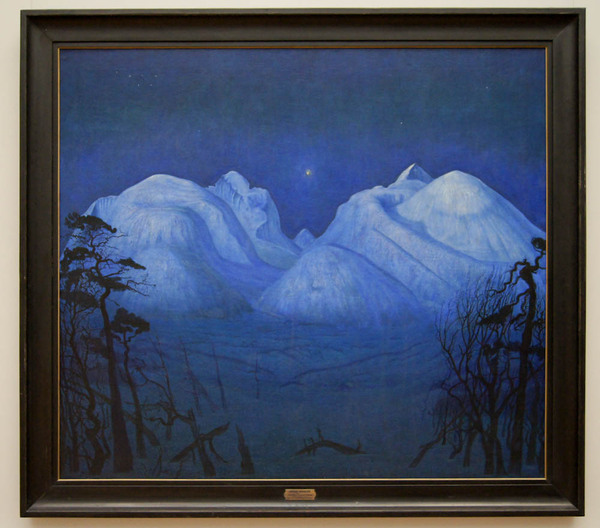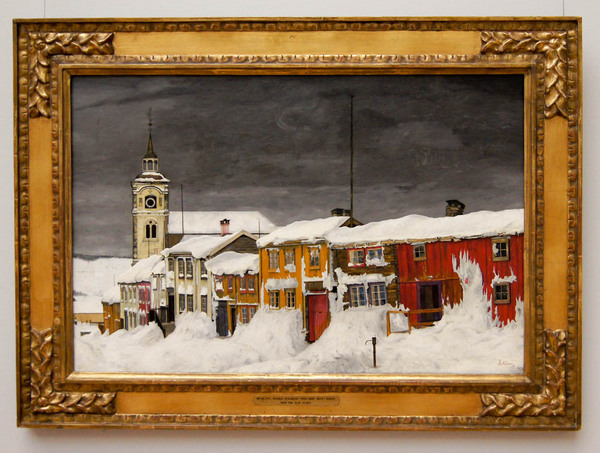Oslo's National Gallery
may not be the Louvre, but I enjoy visiting it for many reasons. That's just one of them. The gallery is on Universitetsgata, just a couple of blocks from the palace grounds, and holds the country's largest public collection of paintings and sculptures.

While the museum does diplay works by masters like Picasso, Cezanne, and Manet, there is a special emphasis on Norwegian artists like Edvard Munch. One version of Munch's most famous work, 'The Scream' is on display. Translated as 'Skrik' (pronounced shriek ) in Norwegian, the painting was stolen from the museum in 1994 and recovered after several months. (The version of 'Scream' at the Munch Museum in Oslo was stolen in 2004, along with the artist's 'Madonna,' and both were recovered two years later.)
Among my favorite Norwegian works at the gallery is 'Stetind i tåke' (1864) by Peder Balke .

The painting portrays Stetind, a mountain in Norway's far northern region (Nordland). The title translates as 'Stetind in the fog.'
I also enjoy 'Vinternatt i Rondane' ('Winter Night in Rondane') by Norwegian artist Harald Sohlberg , painted 1914.

Rondane is Norway's oldest national park and covers almost 400 square miles in Oppland and Hedmark.
Sohlberg also painted Gate i Røros (1903), another of my favorites at the gallery.

This painting has become more special to me since moving to Norway. Even when I one day move away, it is how I will always remember these small Norwegian towns in the wintertime. Lovely, isn't it? Homefronts in Norway are often painted red or yellow. Bright and beautiful in the summer and the winter.
The gallery is well worth a visit. Not only are the paintings and sculptures fantastic, but the building itself is a work of art. The entry staircase is particularly beautiful, reverberating with natural light and graced with a number of enormous paintings.
And when you leave, you can join in a funny, "artistic" tradition.


Visitors to the gallery receive stickers to wear as they tour the exhibits. Upon exit, it appears many visitors have taken it upon themselves to develop a new exhibition. I call it 'Stickery Trashcan,' Blue Period, 2012.